Alumni

|
Kamila Jóźwik (kmjozwik at mit dot edu) Broadly I'm interested in the following questions: How does the primate brain process visual information? More specifically - how does the primate brain recognise objects? What are the underlying computations of visual processing? I'm using fMRI, EEG, MEG, behavioural measures and single-cell recording data, together with computational modelling (including deep neural networks) to understand these processes better. I’m a Sir Henry Wellcome postdoctoral fellow working with Nancy Kanwisher and Jim DiCarlo at MIT, and Zoe Kourtzi at the University of Cambridge. I am interested in modelling the representations in the brain and behaviour, for human and monkey, using deep neural networks. For more information, please see my website and Cambridge Neuroscience page |
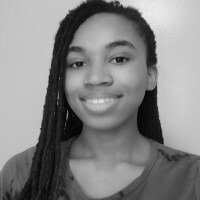
|
Tsehai Boucaud (tsehaib at knights dot ucf dot edu) Many labs in many schools across the country ask, "How can neuroscience help us make better AI models" but for my summer research in Dr. Nancy Kanwisher's lab, I get the exciting chance to ask, "How can AI models help us do neuroscience?" I am an undergraduate studying Computer Science at the University of Central Florida, and my greatest academic passions are Abstractions, Algorithms, and Analogies. I hope to pursue a PhD to ask and answer questions about how humans use those tools and others to navigate complex information and decision-making, so we can improve! |
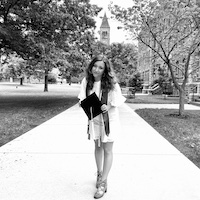
|
Elizabeth Mieczkowski (emiecz at mit dot edu) As a lab tech, I get to work on several ongoing projects at a time. I am interested in applications of computational models and neural networks to cognitive science. I recently graduated from Cornell University with a degree in Computer Science and Psychology, where I worked on natural language processing projects, moral psychology research, and building AI navigation algorithms for autonomous robotic sailboats. |
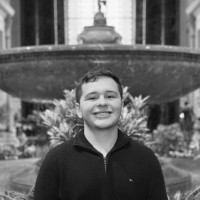
|
Willian De Faria (wdefaria at mit dot edu) Currently, I am a post-baccalaureate researcher working in Dr. Nancy Kanwisher's Lab. I graduated from the University of Notre Dame with a degree in Neuroscience and Applied Mathematics and worked on investigating EEG signals of younger and older adults engaged in cognitive tasks. I am broadly interested in working memory and perception, particularly in how we form mental imagery that are counterfactual to online sensory input. I plan on pursuing an MD/PhD to work as a physician-scientist and I hope to develop novel computational tools that can be easily used in clinical settings for the treatment of neurological and psychiatric disorders. |
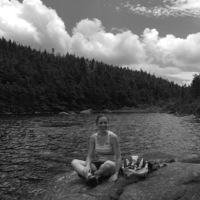
|
Heather Kosakowski (hlk at mit dot edu) At birth, the human infant brain weighs less than one pound. As infants become children and then adults, that tiny piece of tissue grows and expands to three times its birth size and is responsible for housing our entire experience as a human being. Every bit of knowledge, every cognitive capacity, and every thought humans have is a result of what is and isn’t stored by the billions of neurons in our brain. I think that is amazing! As a graduate student, I get to study the development of the functional specialization and organization of the human brain with Nancy Kanwisher and Rebecca Saxe as my advisors! |
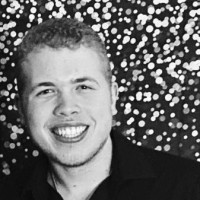
|
Gustavo X Santiago-Reyes (gustxsr at mit dot edu) Reading the 110 pages of "Cognitive Neuroscience: A Very short introduction" during the Summer of 2020 was my first step into looking at the brain in a scientific lens. The following year, I was lucky to work with Thomas O'Connell in a project regarding how predictive the layers of a pool of neural networks are for eye movement data and how this correlates with the model's neural predictability and accuracy. The following Summer, I worked with O'Connell in a project that involved analyzing what features are encoded in the layers of 3D scene representation networks. I'm looking forward to continue exploring more about the computations of the brains using Artificial Intelligence and Computer Science techniques! |
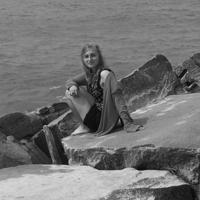
|
Kirsten Lydic (kolydic at mit dot edu) As a lab tech, my project involvement is regularly in flux, and the work I do in the lab is fairly diverse. Presently, though, my main project involves a methods test of MEG source localization in the ventral visual pathway. In other words, using fMRI as a baseline for comparison, how viable is MEG as a methodology for obtaining both temporal and spatial resolution, namely in visual processing of specific domains like faces, words, objects, scenes, etc. Before starting as a lab tech here in 2019, I went to Hampshire College in western MA, where I studied cognitive neuroscience and worked as a research assistant/lab manager for an event-related potential/EEG lab. My main research interests are broadly in the realm of social cognition, and I am also very interested in the processes that underly informational abstraction in the brain. |
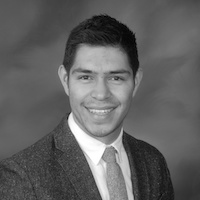
|
Julio Martinez (juliom at mit dot edu) As a lab tech I get to be involved in several difference projects. I have mostly focused on training deep neural networks for specific tasks, such as face identification and object categorization, to do comparitive analysis to human neural computations. I have been working closely with Katharina Dobs exploring lesion experiments on different deep net architectures to understand individual units and groups of units, and in particular, to discover units responsible for face processing. My future interests are in expanding this research to natural language processing tasks. For example, I am interested in understanding whether neural networks segregate the learning of syntax and semantics. Before coming to this lab I spent some time at Apple working on machine learning research in the Platform Architecture Org. I received my masters at Stanford University in Computational and Mathematical Engineering. |
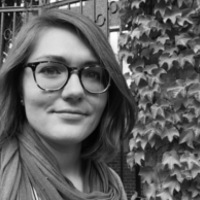
|
Dana Boebinger (dlboebinger at gmail dot com) I am a PhD student in the Harvard-MIT program in Speech and Hearing Bioscience and Technology , working both with Nancy Kanwisher and Josh McDermott. I use fMRI to examine the neural mechanisms that underlie human perception of complex sounds, such as speech and music. I am also interested in how perception of these complex sounds varies across people, as well as the extent to which experience shapes both auditory perceptual abilities and how sound is represented in the brain. |
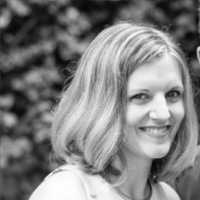
|
Katharina Dobs (kdobs at mit dot edu) What are the behavioral and neural computations underlying face and object processing? Why are these processes segregated in the human brain in the first place? As postdoctoral research fellow in the lab, I worked at the interface of cognitive and computational neuroscience to address these questions. I recently started my own lab at Justus-Liebig University in Giessen, Germany, and continue working on these and related questions. To find out more, or if you are interested in pursuing a PhD or Postdoc, visit my website. |

|
Charlie Kanwisher-Rubin, 2004-2020 (Charlie at mit dot edu) |
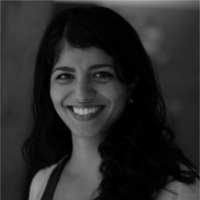
|
Leyla Isik (lisik at mit dot edu) The brain can effortlessly extract visual and social information (such as who you are looking at, what they are doing, and who they are interacting with) from complex visual scenes. As a postdoctoral researcher with Nancy Kanwisher and Gabriel Kreiman, I'm interested in studying how the brain solves this problem using neuroimaging, ECoG, and machine learning. I completed my PhD with Tomaso Poggio where I studied the dynamics of invariant object and action recognition in the human brain. To find out more about my research, you can visit the website of my lab at Hopkins. |

|
Rosa Lafer-Sousa (rlaferso at mit dot edu) I am a first-year graduate student in BCS seeking to shed light on the overall architecture of the ventral visual pathway and establish direct links between neural activity and perception. As an amateur visual artist, my interest in Vision stems from an interest in the intersection of Vision and Art; asking, to what extent can the study (and practice) of art inform an understanding of the visual system and vice versa? Most recently, in my pre-doctoral work in the lab of Dr. Bevil Conway, we discovered that color-selective cortical regions lie systematically adjacent to face-selective cortical regions in the ventral visual pathway in monkeys. Using fMRI in humans, my present work in the Kanwisher lab aims to 1) test whether similar functional organization is found in humans and 2) discover homologous regions in human and monkey brains that might allow us to extend the impact of knowledge obtained through invasive techniques in monkeys. |
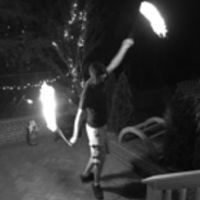
|
David Beeler (dsbeeler at mit dot edu) As a lab tech I get to be involved in a lot of different projects, but I have focused on collecting and analyzing fMRI (functional magnetic resonance imaging) and DWI (diffusion weighted imaging) data. To understand brain development and the progression of brain disorders, it is important to understand how the brain is organized and what types of computations it performs. My goal is to use available technologies and techniques to uncover this functional organization, and ultimately learn something about how we think, feel, and behave. |

|
Anna Mynick (amynick at mit dot edu) I'm involved in several projects as a lab tech, but I primarily split my time between projects investigating when functional regions arise in the developing brain and how functional regions, once developed, are connected to one another. In particular, my work centers around helping collect data from infant brains and analyzing fMRI and diffusion data. Before starting as a tech, I graduated from Wellesley College with a degree in neuroscience. I also had the good fortune of working with Caroline Robertson as an undergraduate researcher, using both fMRI and behavioral measures to pursue questions about memory and perception of scenes. |

|
Jeff Mentch (jsmentch at mit dot edu) I am a lab tech working with Caroline Robertson on projects related to visual perception in autism using techniques like fMRI, eye-tracking, and wearable VR. Before joining the lab, I received an MA in Digital Musics from Dartmouth College where I researched the reconstruction of music stimuli from fMRI data. Before that I worked in Alzheimer’s clinical trials and deep-sea marine biology. I am broadly interested in exploring computational approaches to the study of auditory perception. Here is my website! |
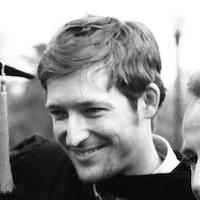
|
Matt Peterson (mfpeters at mit dot edu) How does the brain learn to actively select visual information for the rapid and reliable recognition of the many socially relevant cues available from the human face? My graduate work under the supervision of Miguel Eckstein at UC Santa Barbara combined psychophysics, eye tracking, and computational modeling to understand why people consistently choose (individually) specific places to look on faces. In the Kanwisher lab, I hope to add neuroimaging to this set of techniques to investigate how eye movements interact with the neural representations of faces to achieve the impressive invariance with which the brain perceives facial identities. Additional work, in collaboration with Ken Nakayama at Harvard, will look to define and quantify the visual information that is available in dynamic social situations to guide social behavior, and the neural computations and representations responsible for these processes. |

|
Caroline Robertson (carolinerobertson at fas dot harvard dot edu) I'm interested in the marriage of sensory and cognitive signals in the human brain. Can we use vision to infer patterns of cognition? What neural architecture is common to both perception and thought? This intersection is particularly relevant to our understanding of mental conditions, such as Autism and ADHD, in which different patterns of higher-order cognition are mirrored in the way individuals visually engage with the world. I am a Junior Fellow in the Harvard Society of Fellows. Please see my website for more details about my research. . |
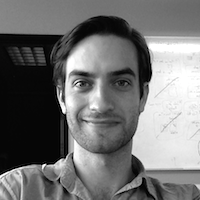
|
Michael Cohen (michaelthecohen at gmail dot com) I was a postdoctoral fellow in the Kanwisher Lab. Before starting at MIT, I completed my PhD at Harvard University working with Ken Nakayama and George Alvarez. While in graduate school, I used a combination of visual psychophysics and functional neuroimaging (fMRI) to characterize the relationship between perceptual capacity and the functional organization of the visual system. Broadly, I am interested in the limits of human perception and how different mechanisms (i.e. attention, neural organization, etc.) determine the contents of conscious experience. Going forward, I hope to extend the findings I have made in the realm of visual perception to other modalities and domains: auditory, long-term memory, cognitive development, and so forth. More information about me can be found on my website. |

|
Ben Deen (benjamin dot deen at mit dot edu) I was a graduate student with Nancy Kanwisher and Rebecca Saxe. My graduate work used fMRI and behavioral methods to probe the neural basis of social perception, as well as the early development of visual cortex in infancy. For more information, see my website. |

|
Sam Norman-Haignere (svnh at mit dot edu) I'm a 4th year graduate student working with Nancy Kanwisher and Josh McDermott. My research focuses on understanding the organization of the human auditory system, using tools that have been influential in the study of visual processing. One line of work is focused on characterizing the global organization of auditory cortex using neuroimaging and computational modeling. A second line of work is focused on understanding the mechanisms of pitch perception, a classic problem that has inspired debate among hearing scientists for over a century. More information about my research can be found on my webpage. |

|
Harris Hoke (hhoke1 at mit dot edu) I'm broadly interested in questions of optimization under uncertainty, legibility, hierarchy, and communication. I started as lab manager after graduating from Swarthmore College with specializations in molecular ecology/evolution and discrete mathematics. In the past, I've worked on simplifying and validating methods of studying supramolecular assemblies, as well as integrating methods from molecular and population biology to study the evolution of social behavior in insects. |
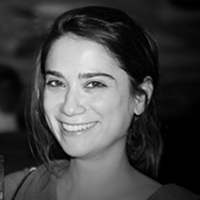
|
Zeynep Saygin (zsaygin at mit dot edu) I recently received my Ph.D. in Neuroscience from MIT under the advising of Drs. John Gabrieli and Rebecca Saxe. My research explores the relationship between neuroanatomical connectivity, measured through diffusion weighted imaging (DWI), and the neural responses underlying high-level vision and cognition. By linking connectivity patterns with neural response profiles, I hope to shed some light on the physical mechanisms which ultimately result in human behavior. To help us accomplish this, we're excitedly collaborating with the Fischl and Wald labs at MGH, and using the new and one-of-a-kind Connectom scanner, which is designed for ultra high-resolution DWI. Keep an eye out for fresh Connectom results hopefully soon! For more information about my research please check out my website. |

|
Evelina Fedorenko (evelina9 at mit dot edu) I am interested in the question of the extent of domain specificity in the mind and brain with regard to language and other cognitive systems. As a postdoctoral fellow in the Kanwisher lab, I use functional MRI to investigate the extent of domain specificity, as well as the internal functional organization, of language in the human brain. I am also pursuing a number of related projects, in collaboration with the Gibson lab and the Saxe lab (see my website for more details on my past and current research). |
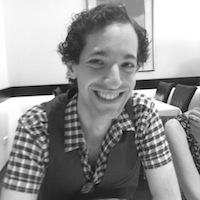
|
Idan Blank (iblank at mit dot edu) I am interested in language as a window to cognition. Working with Nancy and with Ev Fedorenko, I hope to specifically address questions at the intersection of semantics and epistemology: What does it mean "to understand" something? Can we define "meaning" in a cognitively significant way? How is it represented in the brain? How do language mechanisms interact with other cognitive functions to construct meaning? To start addressing such issues, I currently use fMRI to explore the resting-state functional connectivity of language and multiple-demand regions, and also employ MEG to study the processing of abstract object meanings. |

|
Alex Kell (alexkell at mit dot edu) I was a tech in Nancy's lab for two years. Now I study hearing, and I'm a graduate student in BCS working with Josh McDermott. For more on me, please see my website. |
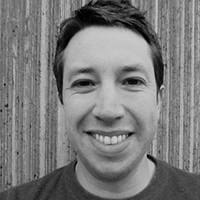
|
Jason Fischer (jason_f at mit dot edu) At a given moment, only a fraction of the visual information that reaches the brain is crucial for the task at hand; the remainder can be distracting and deleterious to performance. I want to know how the brain identifies and suppresses distracting input, what the neural fate of ignored information is, and what happens when the brain's system for ignoring distractions breaks down. To that end, in my graduate work with Dr. David Whitney at UC Berkeley, I studied how selective attention gates visual responses in the human cortex and thalamus. As a postdoctoral scholar in the Kanwisher Lab, in collaboration with Dr. Yuhong Jiang at the University of Minnesota, I am extending this research to investigate visual attention in people with autism spectrum disorder, using fMRI and psychophysics. I'm particularly interested in whether and how attentional deficits might underlie some of the core clinical symptoms of autism. You can find more information about my current projects and publications on my website. |
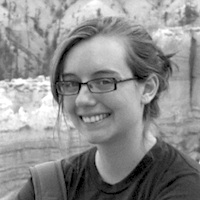
|
Jenelle Feather (jfeather at mit dot edu) I am a technical assistant in the kanwisher lab! I plan to start graduate school this fall in Berkeley/UCSF's bioengineering PhD program and study the cortical mechanisms of the auditory system. I am interested in questions such as how do stages of the auditory system interact and how do top down mechanisms modulate the responses in lower levels of the hierarchy? I graduated from MIT in June 2013 with a bachelor's degree in physics and brain and cognitive science, and before coming to the kanwisher lab I worked on several research projects in systems neurosciece and theoretical physics. |
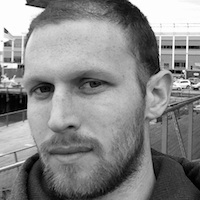
|
Sam Gershman (sjgershm at mit dot edu) You may never have read this blurb before, but you can immediately understand it. How does our brain comprehend arbitrarily complex thoughts with a finite number of neurons? As a postdoctoral fellow in the Tenenbaum and Kanwisher labs, my research uses brain imaging and computational models to study the machinery underlying the infinite productivity of thought. Before coming to MIT, I earned my Ph.D. in Psychology and Neuroscience from Princeton University, where I worked with Ken Norman and Yael Niv. You can learn more about my research by visiting my website . |
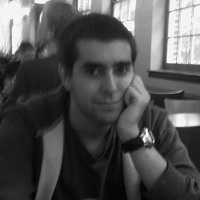
|
Walid Bendris (wbendris at mit dot edu) I recently completed my BS and MS in Biomedical Engineering at RPI with a minor in cognition and am now working as a technical assistant at the Kanwisher Lab on a project about compositional semantics. I've worked on projects involving sustainability, tissue engineering, image analysis, cognitive modeling, and gait biometrics analysis. My interests mainly lie in the fields of cognition, sensation and perception, biomimetics, prosthesis, and brain-computer interfacing. |
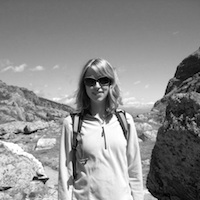
|
Katherine Hermann (khermann at mit dot edu) As a research assistant, I’m working on a project exploring the basis of atypical visual processing in Autism using fMRI and other imaging tools. I’m also looking at how people knit together views of panoramic scenes. Before joining the lab, I studied the cerebellum at Massachusetts General Hospital/Harvard Medical School. I received my BA from the University of Colorado. |
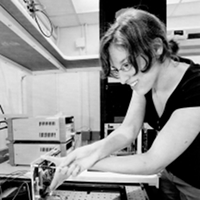
|
Terri Scott (tlscott at mit dot edu) I graduated from New York University in 2008 with a bachelor's degree in physics and mathematics. After teaching science at an outdoor education camp in southern California, I came back to the east coast and earned a master's degree in astronomy from Boston University. I have worked on projects in biomechanics, experimental particle physics and high energy astrophysics, and now as a technical assistant in the Kanwisher Lab, I am beginning my pursuit of a career in cognitive neuroscience. |
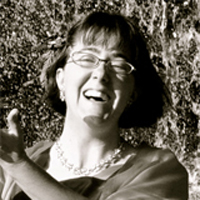
|
Kami Koldewyn (kamik at mit dot edu) I investigate the cognitive and neural architecture of social perception across typical and atypical development. In doing so, my work seeks to answer three intertwined questions: 1) How is social perception and its development altered in autism spectrum disorders and what are the neural bases of these social deficits? 2) How does the social perception system arise and change across typical development? and 3) What is the cognitive and neural architecture of social perception in typical adults? To address these questions, I use a variety of methods, including behavioral and eye-tracking paradigms, visual psychophysics and both structural and functional magnetic resonance imaging (fMRI) in individuals with developmental disorders as well as typical children and adults. I received my Ph.D. in Neuroscience at UC Davis, working with Susan Rivera, Randi Hagerman and David Whitney and have been a postdoc in the Kanwisher lab since the fall of 2009. To read more about my work and my research interests please see my website. |
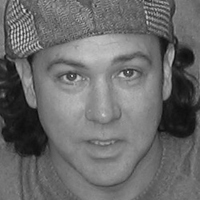
|
Daniel D. Dilks (Danny) (dilks at emory dot edu) My research focuses on two big questions about human vision: i) Cortical plasticity in adult human vision – I want to understand whether and how visual cortex changes in adulthood, and how such neural changes affect perception, and ii) Functional organization of human visual cortex and its origins – How does the functional organization of human visual cortex get wired up in development? To address these questions, I use a variety of methods, including psychophysics, functional magnetic resonance imaging (fMRI) in typical children, adults, and individuals with developmental disorders or brain damage, as well as transcranial magnetic stimulation (TMS) in typical adults - whatever it takes to answer the question. I received my Ph.D. in Cognitive Science at Johns Hopkins University, in the labs of Michael McCloskey and Barbara Landau. Stop by my website for more details. |
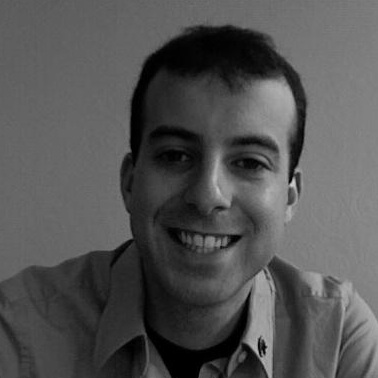
|
Eyal Dechter (edechter at mit dot edu) I studied physics at Harvard and then spent two years as a Kanwisher lab manager. Now I am a third-year graduate student in BCS working with Nancy and with Josh Tenenbaum. |
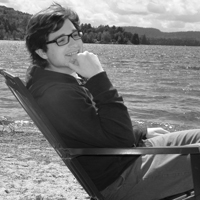
|
Joshua Julian (jjulian at mit dot edu) I was one of the lab managers of the Kanwisher Lab. I graduated from Binghamton University (SUNY) in 2008 with bachelor’s degrees in physics, philosophy, and mathematics, and subsequently pursued graduate work in philosophy at Tufts University. In the Kanwisher Lab, I worked on a number of exciting projects, including investigating plasticity in the adult human visual system, exploring the organization and specialization of the scene-selective network, investigating the development of domain-specific systems in typical and atypical populations, as well as helping to develop new fMRI data analysis methods. I am now pursuing a PhD in cognitive neuroscience in Russell Epstein's lab at Penn. |

|
Julie Golomb (golomb dot 9 at osu dot edu) My research explores the interactions between visual attention, memory, perception, and eye movements. I've focused most on the question of visual stability: how our brains create such rich, seamless perceptual experiences from mere snapshots of visual input. I use a variety of tools in my research, including human psychophysics, gaze-contingent eye-tracking, fMRI, ERP, and TMS. Before coming to the Kanwisher lab I received my PhD from Yale University working with Marvin Chun and Jamie Mazer. Starting Fall 2012 I'm off to a faculty position at Ohio State University. More details and publications can be found on my website. |

|
Po-Jang (Brown) Hsieh (pjh at mit dot edu) I received my Ph.D. at Dartmouth College, under the guidance of Peter Tse. I am interested in understanding how the human brain is able to perceive and experience the world. More specifically, I focus on the problem of consciousness/attention, object/surface perception, and visual form-motion integration. I have been using fMRI, DTI, and psychophysics to tackle these problems via the study of various visual illusions related to bistable illusions, perceptual fading/filling-in and apparent motion. My future goal is to keep investigating the cognitive and neural bases of object/surface perception, attention, and visual awareness with whatever techniques are necessary. More details of my interests as well as past and current publications are available on my website. I am currently faculty at Duke-NUS in Singapore. |
|
|
Jaron Colas (jcolas at caltech dot edu) I joined the Kanwisher Lab as an undergraduate and began an ongoing collaboration with then-postdoc Po-Jang (Brown) Hsieh, using fMRI and psychophysics to investigate consciousness and perceptual decision making, among other topics. I received my BS in Brain and Cognitive Sciences from MIT and am currently pursuing a PhD in Computation and Neural Systems at Caltech. More information and my publications are available on my my website. |
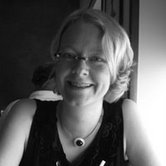
|
Sarah Weigelt (weigelt at mit dot edu) I have worked at the Max Planck Institute for Brain Research in Frankfurt, Germany under the guidance of Lars Muckli and Wolf Singer and received my PhD in Cognitive Neuroscience from the University of Maastricht in the Netherlands with Rainer Goebel being my 'promotor'. I have employed fMRI – and in particular fMRI adaptation – to study the neural correlates of visual object and motion processing, both of which with a major focus on illusions. Because of my fascination for questions related to brain plasticity, I am now extending my work in the Kanwisher Lab to face processing both in typically developing and autistic children. More information and my publications are available on my website. |

|
David Pitcher (dpitcher at mit dot edu) I study the neural correlates of face processing and object recognition. For my PhD work at University College London I demonstrated that transcranial magnetic stimulation (TMS) can be used to selectively disrupt category-selective visual object recognition areas in the occipital cortex. I also used the temporal specificity of TMS to demonstrate when face-selective cortical areas represent face information. You can find my publications here. |
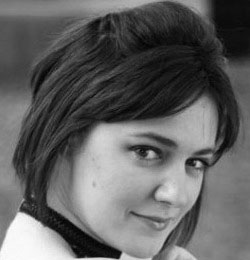
|
Tanya Goldhaber (thaber at mit dot edu) I was class of 2010 majoring in mechanical engineering and minoring in cognitive science and music. At the beginning of my junior year, I had a mid-college crisis and decided I wanted to study cognitive science, which I decided to pursue via research, despite not having a great deal of background in the field. To my surprise, Ev Fedorenko agreed to take me on as a UROP. I worked with her on an fMRI study investigating the neural basis of conceptual representations as part of a larger study on the domain specificity of language processing. I loved working in the Kanwisher Lab so much that I started spending most of my time there, and subsequently got involved in helping David Pitcher with his research using TMS to study category-selective areas in visual cognition. I am currently doing my doctoral work at the University of Cambridge. |
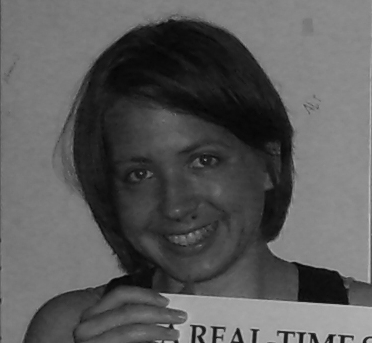
|
Deborah Hanus (dhanus at mit dot edu) As an undergraduate in Kanwisher lab, I worked with Ed Vul on several projects, mainly focused on uncertainty in visual attention. I graduated with a double-degree in Brain and Cognitive Sciences and Computer Science and Engineering, and I plan to enter a graduate program in an intersection of Cognitive and Computer Science. To find out more about me, please see my website. |

|
Ed Vul (evul at mit dot edu) As a graduate student in the Kanwisher lab, I investigated, through psychophysics, fMRI, and computational modeling, how people represent uncertainty and use it to make responses and decisions. I've done research along these lines in the context of attention and knowledge. Other ongoing work investigates the computational mechanisms governing the deployment of visual attention, and decision-making under variant sources of uncertainty. I have also done work on visual aftereffects and memory. I received a BS in Psychology and a BA in Philosophy from UCSD. I also work with Josh Tenenbaum, Hal Pashler, and Don MacLeod. You can find my publications and other trivia here. I am currently an assistant professor at UC SanDiego. |
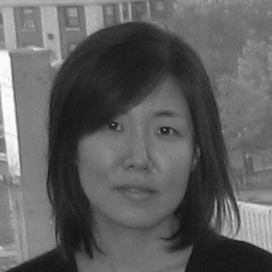
|
Won Mok Shim (wshim at mit dot edu) I received my PhD at Harvard University where, under the guidance of Patrick Cavanagh, I studied the effect of attention, motion, and eye movement on position encoding. Through my PhD work using psychophysics, I showed that attention is a key mechanism underlying distortion of position representations. Then, I was a post-doc in the lab of Yuhong Jiang, where I used cognitive neuroscience tools to investigate neural correlates of capacity limit in visual attention and working memory. As a postdoctoral fellow in the Kanwisher lab, I used behavioral and fMRI techniques to investigate how "where" and "what" information are represented in visual working memory examining higher-order visual areas in dorsal and ventral streams as well as early visual areas. I am now an assistant professor at Dartmouth. |

|
Jason Webster (jwebst at mit dot edu) I joined the Kanwisher Lab as a Technical Assistant with a background in software development. I am currently working in the Vision and Cognition Group in the Psychology Department at the University of Washington for one year before beginning a grad program in cognitive neuroscience and vision research. |

|
Jonas Kubilius (ngk at mit dot edu) After three years of undergraduate research in the Kanwisher lab, I am now a full-time research assistant here, working with Danny Dilks on a wide range of topics: visual illusions and origins of conscious perception, cortical reorganization, development and organization of selective regions in the human ventral visual pathway. I received a dual degree in Mathematics and Physics at MIT in 2008. I am starting my PhD at University of Leuven, Belgium, under the supervision of Dr. Hans Op de Beeck and Prof. Johan Wagemans. My research will be focused on trying to understand what point of the visual hierarchy and what mechanisms underlie the process of parts combining to form a percept of a whole. |
|
|
Karla Evans (kevans at mit dot edu) I received my Ph.D. at Princeton University where, under the tutelage of Anne Treisman, I studied natural scene perception and the role of attention in processing complex visual stimuli, as well as crossmodal interaction between correspondent auditory and visual features. For my thesis I used psychophysics, fMRI, and electrophysiology in humans to understand featural correspondence between basic auditory and visual features, exploring the nature, the neural correlates and the role of attention in their interaction. As a postdoctoral fellow in Brigham and Women's Hospital Visual Attention Lab I am further honing my psychophysical expertise and trying to understand the effect of target prevalence in visual search and how deployment of attention determines what is perceived in real scenes. |

|
Johannes Haushofer (joha at mit dot edu) I got a BA in Psychology, Physiology, and Philosophy at Oxford and then did my PhD with Nancy Kanwisher and Marge Livingstone, working on mid-level shape perception and object recognition as well as economic decision-making, in particular intertemporal choice. I now work with Ernst Fehr at the Institute for Empirical Economics at the University of Zürich, Switzerland. |
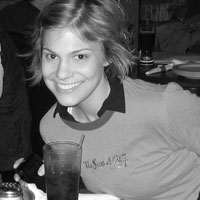
|
Becca Schwarzlose (beccafs at ucla dot edu) Before joining the Kanwisher lab as a graduate student, I received my bachelor's degree in Psychology from Northwestern University. During my wonderful years in the lab, I studied the neural underpinnings of object and scene recognition, focusing particularly on the visual processing of bodies and on the interaction between location and category information in category-specific visual areas. I received my PhD in Neuroscience from MIT in 2008 and am currently studying schizophrenia and bipolar disorder as a Postdoctoral Fellow in the lab of Dr. Tyrone Cannon at UCLA. |

|
Chris Baker (bakerchris at mail dot nih dot gov ) Chris' main interests are in understanding how visual objects are represented in the brain and how those representations change with experience. Although his work at the Kanwisher Lab utilized fMRI, he originally trained as an electrophysiologist working with David Perrett in St Andrews, and with Carl Olson and Marlene Behrmann at the Center for the Neural Basis of Cognition in Pittsburgh. He is currently Investigator and Chief of the Unit on Learning and Plasticity, Laboratory of Brain and Cognition, NIMH |
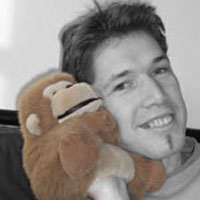
|
Hans Op de Beeck (hop at mit dot edu) Hans has received his PhD at the University of Leuven (Belgium) where he studied the processes underlying visual shape categorization in monkeys and human subjects through single-unit physiology and psychophysics (see here). While at MIT, he began investigating the effect of learning on object recognition in monkeys and humans using fMRI in a collaboration between Jim DiCarlo and Nancy Kanwisher. |
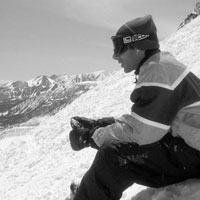
|
Sabin Dang (sdang at mit dot edu) Sabin came to work in the Kanwisher lab as a Technical Assistant after receiving a BA in Psychology at the University of Southern California. |
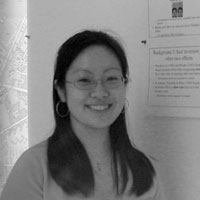
|
Nao Gamo (nao at alum dot mit dot edu) I am a former member of the Kanwisher lab, where I enjoyed working on a project to investigate the holistic processing of own and other-race faces among Caucasian and Chinese subjects. I am currently a graduate student at Yale University, where I am working with Dr. Amy Arnsten. I am using in vivo physiology, pharmacology and behavior to explore the mechanisms of stress-induced prefrontal cognitive dysfunction and their effects on decision-making. |
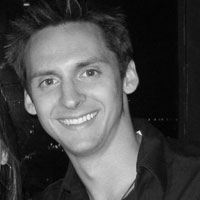
|
Chris Hemond (chemond at mit dot edu) Chris was an undergraduate UROPer in his senior year at MIT. And while he was happy he would be graduating in a matter of months, he greatly enjoyed being a part of the Kanwisher lab with then postdoc Hans Op De Beeck, exploring how certain areas of the brain respond to stimuli presented in different areas of the visual field. In previous semesters he studied learning effects using fMRI, and has been known to occasionally sneak out of the Kanwisher lab to visit Hans' monkeys in the Dicarlo Lab. |

|
Mike Mangini (mangini at mit dot edu) My research concerns face and object recognition. My projects while with the Kanwisher Lab attempted to better understand the role of the cortical areas associated with face processing by correlating human performance on to the activity measured in these areas with fMRI. |
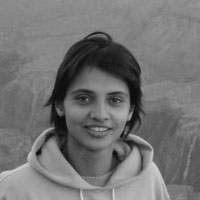
|
Leila Reddy (lreddy at mit dot edu) I am a post-doc at the Centre de Recherche Cerveau et Cognition in Toulouse, interested in object representation and neural coding. I received my PhD in Computation and Neural Systems from the California Institute of Technology under the supervision of Professor Christof Koch, and then joined Nancy Kanwisher's lab at MIT as a post-doc. Leila was recently received a research award from the French Medical Foundation. |

|
Mark Williams (mwillliam at maccs dot mq dot edu dot au) As a CJ Martin (NHMRC) Postdoctoral Fellow from the Macquarie Centre for Cognitive Science at Macquarie University, Australia, I worked with the Kanwisher lab on projects including super high-resolution functional imaging with a 32-channel head coil; super high-field strength functional imaging with a 7 Tesla human magnet; and simultaneous MEG/EEG and fMRI imaging studies. My main interests include the role of the amygdala in facial expression perception, the role of the PPA in 'place' perception, and how attention influences perception in general. I originally trained in cognitive and neuro-psychology with John Bradshaw at Monash University and then in fMRI and TMS with Jason Mattingley at the University of Melbourne. I am currently a Senior Academic (CORE) from the Macquarie Center for Cognitive Science at Macquarie University. |
|
Galit Yovel (galit at freud dot tau dot ac dot il) Galit Yovel received her PhD in Psychology (Cognitive Neuroscience) from the University of Chicago in 2001. She then completed a post-doctoral training in fMRI of high level vision in the department of Brain and Cognitive Sciences at MIT. Galit joined the Department of Psychology at Tel Aviv University as a faculty member in 2005. She also received the very prestigious Alon Fellowship. Her work focuses on the cognitive neuroscience of high-level vision, face and object perception, and individual differences in visual processing. |
|
|
Yaoda Xu (yaoda dot xu at yale dot edu) |
|
|
Damian Stanley (das at cns dot nyu dot edu) |
|
|
Kalanit Grill-Spector (kalanit at psych dot stanford dot edu) |
|
|
Yuhong Jiang (jiang166 at umn dot edu) |
|
|
Rebecca Saxe (saxe at mit dot edu) |
|
|
Jorge Jovicich (jorge.jovicich at unitn dot it) |
|
|
Hilary Barth (hbarth at wesleyan dot edu) |
|
|
Ben Balas (balaslab.ndsu at gmail dot com) |
|
|
Winrich Freiwald (freiwald at brain dot uni-bremen dot de) |
|
|
Isabel Gauthier (isabel doot gauthier at vanderbilt dot edu) |
|
|
Paul Downing (p dot downing at bangor dot ac dot uk) |
|
|
Zoe Kourtzi (Z dot Kourtzi at Bham dot ac dot uk) |
|
|
Russell Epstein (epstein at psych dot upenn dot edu) |
|
|
Jody Culham: (culham at imaging dot robarts dot ca) |
|
|
Marvin Chun (Marvin dot Chun at yale dot edu) |
|
|
Frank Tong (frank dot tong at vanderbilt dot edu) |
|
|
Alex Holcombe (alexh at psych dot usyd dot edu dot au) |
|
|
Liana Machado (liana at psy dot otago dot ac dot nz) |